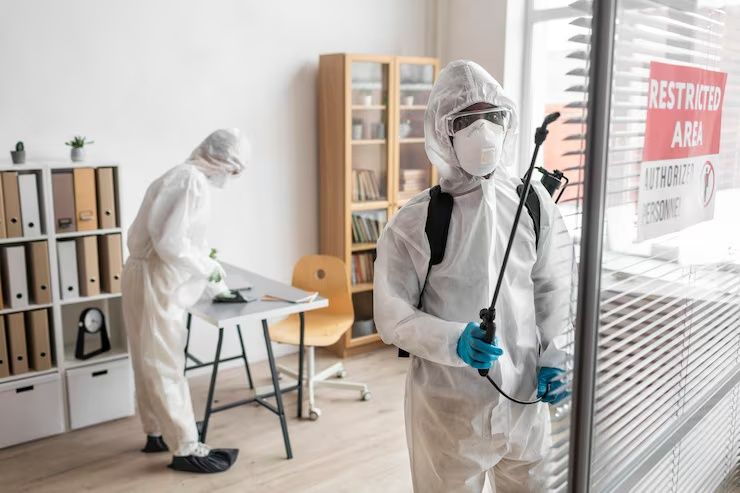Comprehensive Guide to Pest Control Services: Importance, Trends & Tools
Pest control services include the control and elimination of pests, rodents and other unwanted organisms that invade homes, businesses, farms and public places. These services are crucial to health, safety, security and environmental stability.

Importance of Pest Control Services
Pest control services are important in many areas, which affects everyone from homeowners to food producers. Here is the reason why the subject is particularly relevant today:
Public Health Safety
-
In agriculture and food processing, insect control prevents pollution and malfunction.
Food Security and Storage
-
Protects food supplies from contamination and wastage.
Home and Infrastructure Protection
-
Wooden structures can suffer widespread damage from termites and carpenter ants.
-
Rodents chew through electrical wires and increase the risk of fire.
Mental Welfare and Rest
-
Pest infestations can cause stress, anxiety and poor sleep.
-
Active insect management improves quality of life.
Recent Updates in Pest Control (2024–2025)
-
Several insect control suppliers began to offer member-based services, allowing continuous monitoring and treatment.
-
The industry also uses thermal imaging and drone monitoring in large properties and agricultural fields.
Laws and Regulations That Control Pest Controls
Pest control services are strongly regulated due to their possible impact on health and the environment. While policies vary from country to country, most include the following items:
License and Certification
-
Providers should be certified and licensed by public agencies.
-
Technicians are required to undergo training on the handling of pesticides and safety.
Environmental Restriction
-
The use of certain chemicals to prevent contamination of water and soil is prohibited.
-
The use of restricted substances can lead to punishment.
Professional Health Regulations
-
Workers should use protective equipment and follow safe application processes.
-
Companies should keep detailed records of chemical use and storage.
Example: India
-
According to the Pesticides Act, 1968, only registered products can be used.
-
The Central Pesticide Board controls production, sales and use.
-
Urban insect control is also regulated by local municipal health departments.
Accessories and Resources for Pest Control
Digital Equipment
-
Insect Identifier Apps (e.g., Image Insect, Insect-D): Helps identify insects with images.
-
Home Monitoring Systems: Smart traps and motion sensors for rodents and insects.
-
Weather-Based Insect Alerts: Apps that inform users of seasonal insect activity in their area.
Online Resources
-
Government Portals: Many countries maintain databases for licensed pest control operators.
-
DIY Pest Control Guides: Step-by-step instructions for safe treatment methods for homes.
-
Pesticide Safety Database: Information on chemical use, risks and alternatives.
Professional Services
-
Integrated Pest Management (IPM) Advisors: Provide strategic plans using multiple control methods.
-
24/7 Emergency Pest Services: Available in urban and semi-urban areas for severe infestations.
Frequently Asked Questions (FAQs)
What are the most common pests?
Common insects include ants, cockroaches, termites, mosquitoes, bed bugs, rats and spiders. The specific type often differs by climate and location.
Is pest control safe for children and pets?
Yes, when done correctly. Most professional services use approved products that are safe after drying. However, it is recommended to vacate treated areas for a few hours as a precaution.
How often should pest control be done?
It depends on the severity of the infestation and the type of pest. Preventive treatments are usually scheduled quarterly or biannually.
What is Integrated Pest Management (IPM)?
IPM is a permanent approach that includes multiple strategies—biological, physical and chemical methods—to handle pests with minimal impact on health and the environment.
Final Thoughts
With modern technology, updated laws and increasing awareness, the industry is developing towards safer and more efficient practices. Whether you are facing a minor inconvenience or a larger infestation, understanding your options and responsibilities is the first step to achieving a pest-free environment.
